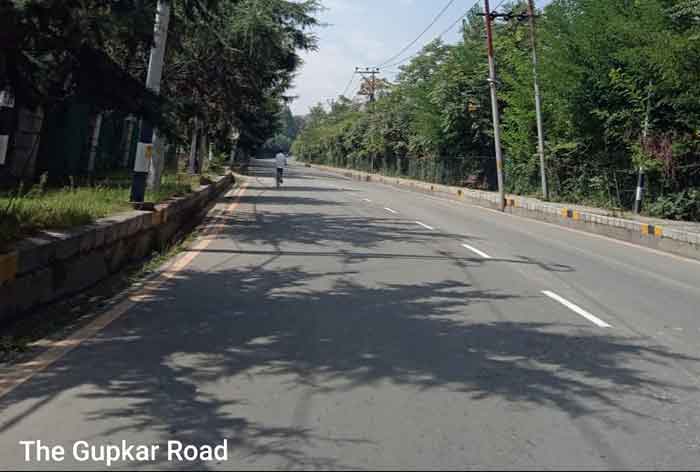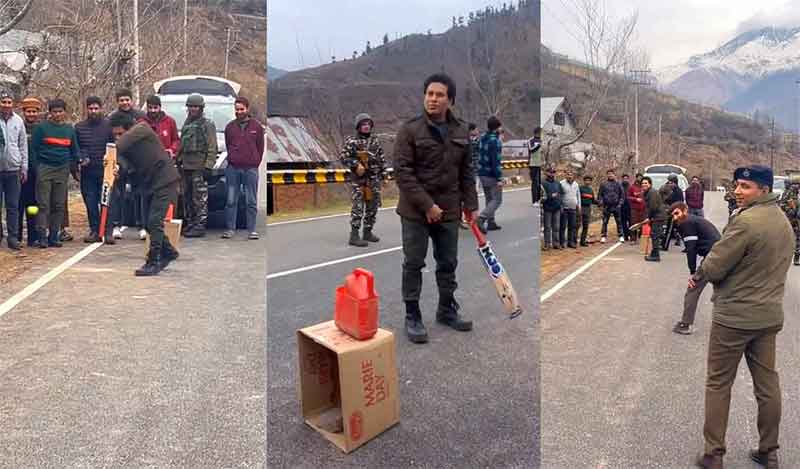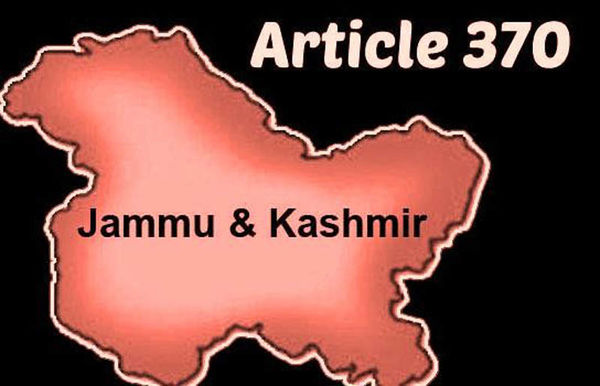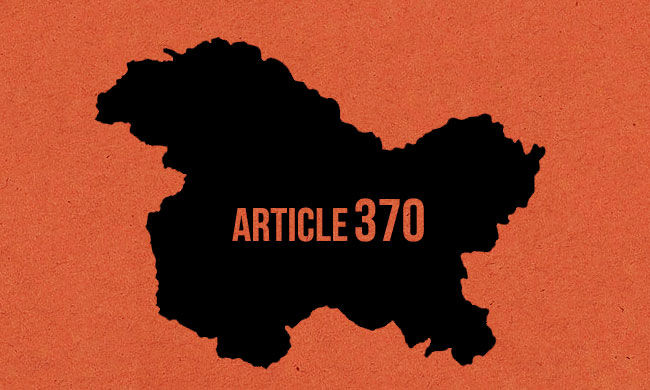
Gupkar as the name behind a recent political declaration is catching headlines these days. On 4 August 2019, a group of politicians in Srinagar issued a statement, now known as the Gupkar Declaration, to defend the “identity, autonomy and special status of Jammu & Kashmir against all attacks and onslaughts whatsoever”. Within 24 hours, the Government of India responded by stripping the State of this identity and status and, additionally, broke it into two parts. It took a full year for these politicians to say that they stood by their previous year’s declaration. Critics, who see in the Gupkar Declaration a shadow of the erstwhile Plebiscite Front, say that these politicians were actually seeking to safeguard their future which had since settled down in the past. Forty-five years ago, it may be recalled, the Plebiscite Front was encashed by its leaders to win an embrace with power. Others have damned the Declaration as a ‘hollow slogan’ and ‘absolute fallacy’. The only endorsement it received was from an unlikely quarter – Pakistan, where Foreign Minister Shah Mehmood Qureshi mentioned it to embarrass Indian leadership. Unlike in the case of the Plebiscite Front, people might not have to wait for 22 years to understand what it was all about. This time, the curtains could fall sooner than expected.
The Declaration was made at the sprawling lawns of the three-time Chief Minister of Jammu & Kashmir, Dr. Farooq Abdullah’s residence situated at Gupkar, hence the name Gupkar Declaration. The house was purchased by Dr. Abdullah’s father, Sheikh Mohammad Abdullah, during the early 1970s when, in the words of his close associate, Mirza Afzal Beg, they were still “wandering in the wilderness” and had not returned to power which they finally did in 1975. There are quite a few interesting anecdotes resting with the memory of local people about the building. The bungalow was under the occupation of a tenant, who happened to be an army officer, when the senior Abdullah purchased it for his eldest son. The officer was taking his own time to vacate the building which did not please its new owner. One day, the Lion of Kashmir lost his cool and asked the officer to vacate the building at once. There erupted an altercation between the two during which the officer allegedly pulled out his weapon. Luckily, the situation was diffused and nothing untoward happened. In another incident, it was said that when Sheikh Sahib took possession of the building he had a revenue official with him to demarcate the boundary of the premises extending towards the hill. When asked where the premises end, the Patwari, struck by Sher-i-Kashmir’s overwhelming presence, stammered, “Jinab yotam toih pekiv” (Sir, where you stop your walk).
That being an aside, Gupkar as a place has an ancient existence. It is a kilometer long foothill stretch from Shankar Villa, the office of the United Nations Military Observers Group for India and Pakistan (UNMOGIP), in the west to the last Dogra ruler, Hari Singh’s erstwhile palace, Talay Manzil, literally meaning the Abode of Luck, in the east. It is a famous segment of Sonawar, an uptown locality sitting between the prominent hill of Takht-e-Sulaiman and the Jhelum River, 3.7 km south of the city center, Lal Chowk.
Gupkar derives its name from the hill – Gopadari or Gopa – at whose feet it is situated. The hill, it may be recalled, was known by different names in the past including Gopadari, Jeetlark and Takht-e-Sulaiman until officially changed to Shankaracharya during the Sikh rule (1819-1846), and popularized by the Dogra regime (1846-1947) and, more vigorously, by the post-1947 elected Governments.
During the reign of Gopaditya, 4th century BC ruler of Kashmir, the hill was known as Gopadri or Gopa. The king, whom some sources credit with construction of the ancient stone temple atop the hill, settled at the foothill several Brahmins who had been brought from outside Kashmir [Raj. i : 341]. He granted them agrahars or dwelling units at the foothill. The place came to be known as Gopa Agrahar after the name of the hill. Gupkar is the corrupted form of Gopa Agrahar. For Aurel Stein, the 19th century explorer who translated Kalhana’s Rajatarangini, Gupkar was “a considerable village” [Raj. ii : 290]. Thomas Moore’s famous book, Lala Rookh: An Oriental Romance, published in 1904, carries a painting of ‘Gupkar Gaon’ (Gupkar Village).
Gupkar has remained a highly sought after residential area for the families close to power in different periods of time. If it were Brahmins during the reign of Gopaditya, during the Dogra autocracy there were Dewanas, Wazirs and Thappars who built their houses here. Likewise, during the ‘popular rule’, Dhars, Abdullahs, Kochaks et al. moved in. Following the outbreak of armed militancy in Kashmir in 1989, Gupkar became a high security zone where ministers and senior bureaucrats found safe abodes. Besides Farooq Abdullah, two other former Chief Ministers of Jammu & Kashmir, Omar Abdullah and Mehbooba Mufti, also reside at Gupkar, the last two in Government bungalows converted into their private residences after changing the existing rules. One of the prominent residents of Gupkar was Justice Janki Nath Wazir, Chief Justice of Jammu & Kashmir for two decades.
During Dogra autocracy, especially the reign of Hari Singh, Gupkar was a scenic landscape and sparsely populated. Later, especially after the 1960s, its fortunes took a turn for worse as houses and offices of different Government agencies mushroomed, adversely telling upon the scenic grandeur of the area. It was once a prominent place as location of several important buildings, besides being an approach road to the Talay Manzil, the palace of Maharaja Hari Singh.
The Talay Manzil, whose name was inspired by that of Hari Singh’s close friend, Nawab Talay Yar Khan, proved inauspicious for its occupant as he had to pack his bags and leave this, optimistically named, Abode of Luck in a crisis situation in October 1947 to escape the Tribal Attack on Kashmir. About the palace, it is said that the Maharaja took keen interest in its construction and monitored it on a daily basis. An incident taken from the local legend unveils a rather soft side of a tyrant whose rule is otherwise stained by the blood of innocents. It is said that while the construction of the palace was going on, one day close to the Muslim festival of Eid, Hari Singh observed a poor labourer in tears at the construction site. Known as a fluent speaker of Kashmiri language, Singh asked the labourer what had brought him to tears. The poor man replied that the contractor had not paid him his dues and as Eid was round the corner, he had no money to feed his family. Infuriated, Hari Singh summoned the contractor and gave him a hell. “Are you blind not to observe that every evening when I inspect your day’s work I point out some or the other masonry fault in the boundary wall and direct it to be redone. Do you think I am a fool to do this when there exist no such faults? I do this only to let poor labourers like him earn a day’s extra wages and here you are withholding this impoverished man’s hard earned wages”, Singh is said to have told the contractor, who quickly paid the labourer his wages. The Talay Manzil has the dubious distinction of being the venue where Hari Singh’s only son, Karan Singh, the 22-year old Sadr-e-Riyasat, signed the dismissal order of Prime Minister Sheikh Mohammad Abdullah on 9 August 1953.
Among other prominent Dogra era buildings on Gupkar was the Masonic Lodge or Jadu Ghar, as locals called it, built during Pratap Singh’s reign. The land for the building was allotted by the Government in 1904. The Masonic Lodge was an affiliation of the Grand Lodge of Freemasons in England. Post-1947, the premises of the Lodge was used as a Charse Takyi or pot addicts’ situate for many years. The building, which now houses the office of a security agency, was like a mystery house for the locals, especially the children. Pratap Singh’s another addition to Gupkar was the Gupkar Distillery, a wine manufactory. The wines made here were also exported. In 1911, as many as 228 bottles were exported to British India. However, soon the sale of liquor sharply fell and the manufactory was closed in 1913-14. Another Dogra-era building is the Farashkhana, the royal store of tents, furnishing, crockery, chafing dishes and other items used in State receptions and banquets. The store is now under the control of the Department of Hospitality & Protocol.
The Valley’s first private nursing home, the Cottage Hospital for Europeans, was also built at Gupkar in 1894. The nursing home was built to spare the Europeans in Kashmir from inconvenience of visiting hospitals thronged by local patients. In 1925, the year of Hari Singh’s ascendency to the throne, the Cottage Hospital, then run with financial assistance from the British Indian Government and voluntary contribution by European visitors, was changed into a Government-aided health facility and renamed as the Kashmir Nursing Home with a newly constructed building. The Kashmir Nursing Home had the distinction of being the only private health facility in the Valley till the 1980s when the private sector in healthcare started coming up. During the 1960s, Dr. Mathura Das, an eye specialist from Punjab, ran an eye clinic at Gupkar where he also performed cataract surgeries, in certain cases, allegedly, without anesthesia.
Two of Kashmir’s dreaded interrogation centers were located on the Gupkar Road at different periods of time. During 1960s and 70s, the Red-16 was the most infamous interrogation and torture centre where political prisoners and boys and men who challenged the Indian rule over Kashmir were incarcerated. In 1965, some captured armed infiltrators from Pakistan were also held as prisoners there. A few hundred yards from the Red-16 is located another building which was turned into an interrogation centre, known as Papa 2, and earned much infamy during the 1990s. The building later served as residence of the then Chief Secretary and, later, the two successive Chief Ministers after the Government incurred an expenditure of over ₹ one crore on its renovation. Chief Secretary Ashok Jaitly alias Tony, who first moved into the renovated building, organised religious ceremonies to ward off spirits which were reported to haunt the premises after several youth had allegedly lost their lives there during interrogation.
During early 1970s, a new Muslim cemetery came up at Gupkar on the slopes of the hill which is today one of the best maintained graveyards in Kashmir. The cemetery has three sections, one each reserved for the three components of Sonawar – Bonamsar, Palpora and Sonawar. Ali Mohammad Bhat, Mohalla President of Palpora was among the first persons buried in the new graveyard.
At one point in time, the Government Transport Undertaking (GTU), now State Road Transport Corporation, buses plied from Lal Chowk to Batwara via the Gupkar Road, skipping the Sonawar Bazaar, and passing through the military garrison.
Khalid Bashir is a former civil service officer and author. His recent books are Kashmir: Exposing the Myth Behind the Narrative, and Kashmir: A Walk Through History
SIGN UP FOR COUNTERCURRENTS DAILY NEWSLETTER
















































